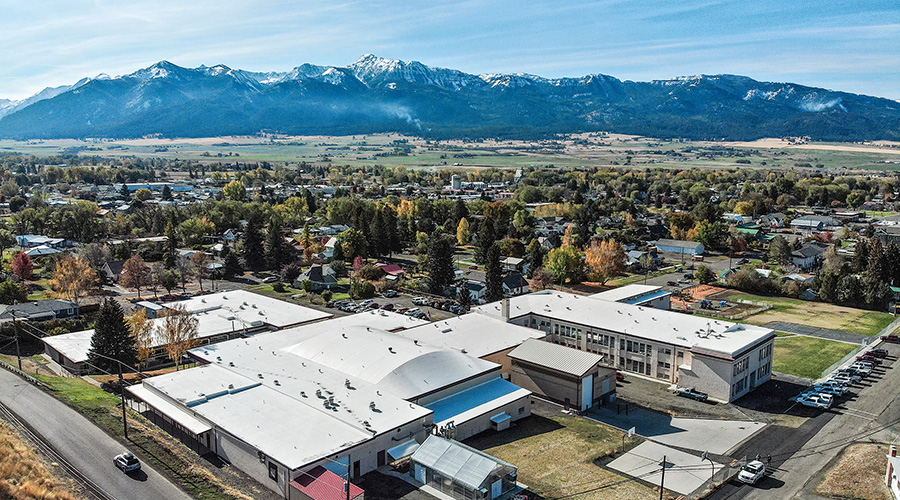SPONSORED
CFFA Vinyl Roofing Division - Branded Feature
Yes, 'Cool' Roofs Still Matter in Colder Climates
By CFFA Vinyl Roofing Division
Studies prove the energy and environmental positives are worth it.
As the benefits of cool PVC (vinyl) roofs have taken hold in construction, architecture, and urban planning, one question persists: Does the energy-saving value of cool roofs still apply in northern climates?
By now, it is largely understood that cool roofs keep buildings and their surroundings cooler by absorbing less of the sun’s rays and reflecting more heat straight back up into the sky. Cumulatively, this can have a significant impact in reducing the phenomenon of urban heat islands. It also saves energy costs for individual building owners (by reducing the amount of energy needed to keep the building cool).
The reason that warm-climate usage of cool PVC roofing is rarely disputed stems from this proven statistic: PVC reflects at least 80% of sunlight away from its surface. This not only keeps the building and its surroundings cooler, reducing the need for air conditioning, but it also helps to reduce haze and ozone that can negatively impact summertime air quality.
But how does this translate to northern climates, the thinking goes, where temperatures are naturally cooler for much of the year than their southern counterparts? A couple of studies available from the Chemical Fabrics and Film Association – Vinyl Roof Division make the benefits clear, regardless of climate.
To better understand how cool roofs reduce peak energy demand in differing climates, researchers at Oak Ridge National Laboratories examined the seasonal variation in peak air conditioning demand for a variety of different climates across North America. Their findings suggest that, even though base cooling demand may be higher in hot climates as compared to cooler climates, almost all climates exhibit a seasonal variation in the peaks for roof-related air conditioning demand.
For example, although a warmer city like Phoenix exhibits a higher and more consistent monthly demand for air conditioning as compared to a cooler city like Minneapolis, demand falls off at the beginning and end of the year for both cities, with a substantial portion of peak demand located within a six-month period from April to September. As a result, it may be possible to reduce peak demand in both cities using cool roofing technologies.
In fact, a recent study of cool roofs and peak demand costs suggests that the potential for roof-related peak demand savings for hotter cities like Phoenix and colder cities like Minneapolis may be approximately identical. In effect, peak demand savings in hot climates may be described as a smaller piece of a larger pie, while peak demand savings in cold climates may be described as a larger piece of a smaller pie. The two figures below illustrate this.

Meanwhile, the U.S. Environmental Protection Agency, citing work by climate scientists Ronnen Levinson and Hashem Akbari, says the so-called “heating penalty” often pinned on northern climates is typically offset by summer cooling energy savings from cool roofs.
Several factors can limit or reduce the heating penalty of cool roofs in winter. The sun’s angle in winter is lower, and days are shorter than in summer, reducing the effect of cool roofs on wintertime energy use. Effective insulation and energy-efficient design can also reduce impacts. Buildings in areas with heavy and long-lasting snow cover would have the lowest heating penalty from cool roofs since the roofs will be covered with reflective snow for most of the winter.
Simply put, whatever warming gains you might experience in colder months with a dark roof, they still won’t offset the added air conditioning expense of summer. Not to mention the environmental impact of that increased energy usage.
For more information on PVC roofing, visit https://vinylroofs.org/.
Download the case study “Reducing Peak Energy Demand: A Hidden Benefit of Cool Roofs” from the CFFA – Vinyl Roofing Division website.
Download the case study “Cool Roofs in Use in Northern Climates” from the CFFA – Vinyl Roofing Division website.









